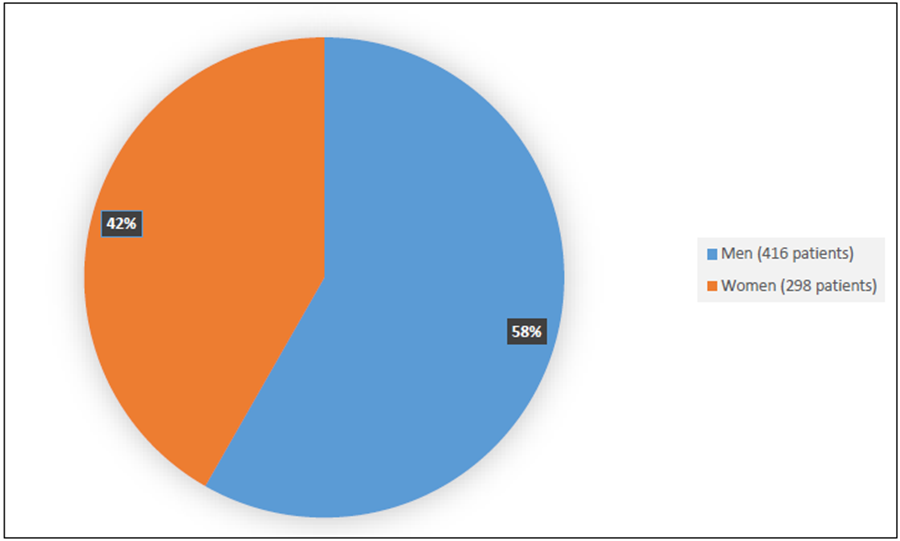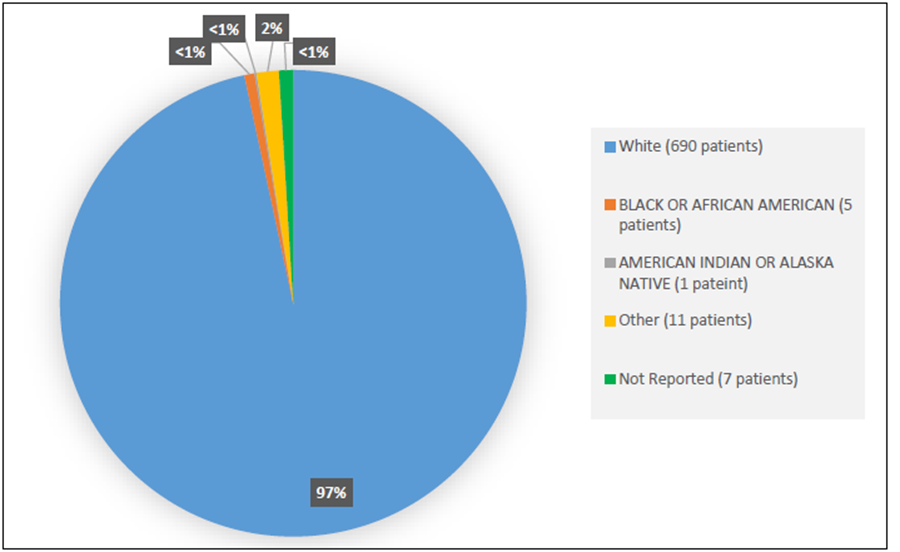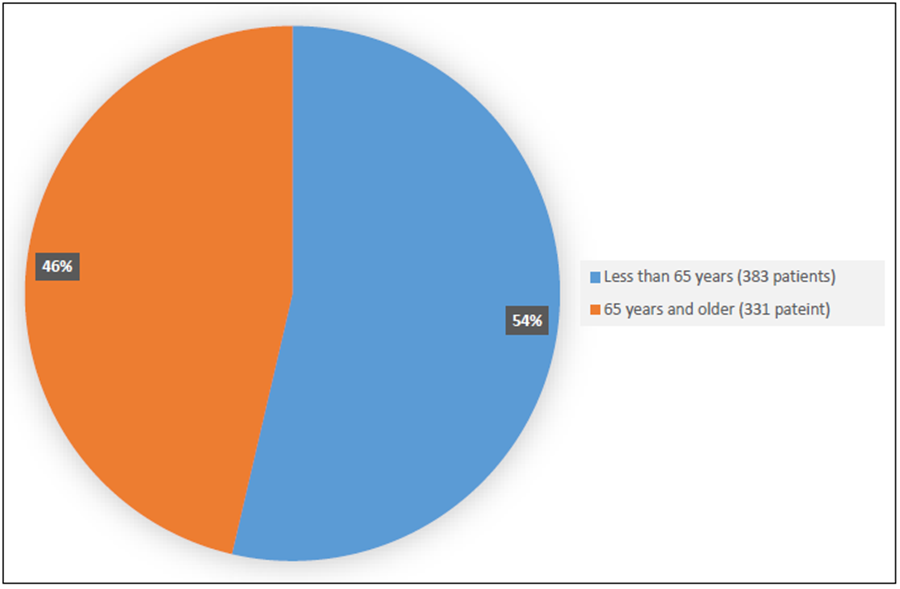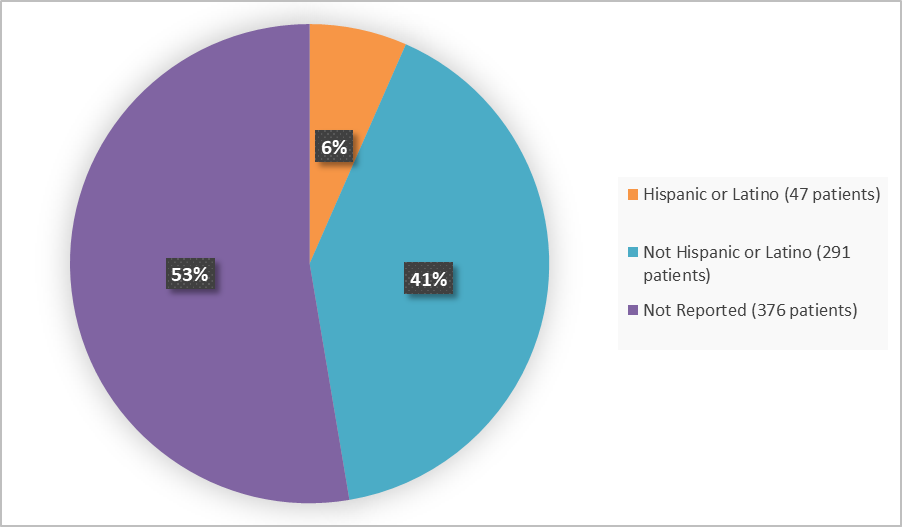Drug Trials Snapshot: OPDUALAG
HOW TO USE THIS SNAPSHOT
The information provided in Snapshots highlights who participated in the key clinical trials that supported the original FDA approval of this drug, and whether there were differences among sex, race, age, and ethnic groups. The “MORE INFO” bar shows more detailed, technical content for each section. The Snapshot is intended as one tool for consumers to use when discussing the risks and benefits of the drugs.
LIMITATIONS OF THIS SNAPSHOT:
Do not rely on Snapshots to make decisions regarding medical care. Always speak to your healthcare provider about the benefits and risks of a drug.
Some of the information in this Snapshot is for presentation purposes and does not represent the approved conditions of use of this drug. Refer to the OPDUALAG Prescribing Information for all of the approved conditions of use of this drug (e.g., indication(s), population(s), dosing regimen(s), safety information).
Snapshots are limited to the information available at the time of the original approval of the drug and do not provide information on who participated in clinical trials that supported later approvals for additional uses of the drug (if applicable).
OPDUALAG (nivolumab and relatlimab-rmbw)
(Op-DEW-uh-lag)
Bristol Myers Squibb
Original Approval date: March 18, 2022
DRUG TRIALS SNAPSHOT SUMMARY:
What is the drug for?
OPDUALAG is a fixed-drug combination of nivolumab and relatlimab. OPDUALAG is used to treat adult and pediatric patients 12 years of age or older with a type of skin cancer called melanoma that cannot be removed by surgery (unresectable) or has spread to other parts of the body (metastatic).
How is this drug used?
OPDUALAG is injected into the vein (intravenous infusion) by a healthcare provider once every four weeks. It takes about 30 minutes to receive an OPDUALAG infusion.
Who participated in the clinical trials?
The FDA approved OPDUALAG based on evidence from one clinical trial of 714 patients with previously untreated metastatic or unresectable melanoma. The trial was conducted at 114 sites across the US and 24 other countries. This same clinical trial was used to assess efficacy and safety.
What are the benefits of this drug?
The benefit of OPDUALAG was evaluated by measuring the length of time tumors did not grow after treatment (progression-free survival or PFS). In the clinical study, the progression-free survival for patients taking OPDUALAG was about 10.1 months compared to 4.6 months for patients taking nivolumab.
What are the benefits of this drug (results of trials used to assess efficacy)?
Efficacy results from the clinical trial are summarized in Table 1 below. The major efficacy outcome measure was progression-free survival (PFS) by blinded independent central (BICR) review. The approval for OPDUALAG was based upon a statistically significant improvement in PFS.
Table 1: Efficacy Results of the Clinical Trial
|
|
OPDUALAG |
Nivolumab |
|---|---|---|
|
Progression-free survival |
||
|
Number of patients with progression/death, n (%) |
180 (51) |
211 (59) |
|
Median in months (95% CI) |
10.1 (6.4, 15.7) |
4.6 (3.4, 5.6) |
|
Hazard ratio (95% CI) |
0.75 (0.62, 0.92) |
|
CI: confidence interval
Source: Clinical trial data
Were there any differences in how well the drug worked in clinical trials among sex, race and age?
- Sex: OPDUALAG works similarly in males and females.
- Race: The number of patients of races other than White was small; therefore, differences in how OPDUALAG worked among races could not be determined.
- Age: OPDUALAG worked similarly in patients below and above 65 years of age.
Were there any differences in how well the drug worked in clinical trials among sex, race, and age groups?
Table 2 shows the efficacy results by sex and age subgroups.
Table 2: Progression-Free Survival in Demographic Subgroups in the Clinical Trial
|
|
Number of Progression or Death Events/Total |
Hazard Ratio (95% CI) |
|
|---|---|---|---|
|
|
OPDUALAG |
Nivolumab |
|
|
Overall Progression/Death |
180/355 |
211/359 |
0.76 (0.62, 0.92) |
|
Sex |
|||
|
Male |
98/210 |
123/206 |
0.68 (0.52, 0.89) |
|
Female |
82/145 |
88/153 |
0.88 (0.65, 1.19) |
|
Age |
|||
|
< 65 years |
99/187 |
117/196 |
0.83 (0.64, 1.09) |
|
≥ 65 years |
81/168 |
94/163 |
0.69 (0.51, 0.93) |
CI: confidence interval
Source: Clinical Trial Data
What are the possible side effects?
The most common side effects of OPDUALAG are muscle and bone pain, tiredness, rash, itching, and diarrhea. The most common laboratory abnormalities include decreased red blood cell and white blood cell counts, increased liver function test results, and decreased salt (sodium) in the blood.
OPDUALAG can cause serious immune reactions such as inflammation of the organs and tissues of the body (including the lungs, gut, liver, kidneys, hormonal glands, skin, or heart) or allergic reactions to the drug infusion.
What are the possible side effects (results of trials used to assess safety)?
Table 3 and Table 4 below summarize the side effects and laboratory abnormalities that were reported in the clinical trial.
Table 3. Adverse Reactions in ≥15% of Patients Receiving OPDUALAG in the Clinical Trial
|
Adverse Reaction |
OPDUALAG |
Nivolumab |
||
|---|---|---|---|---|
|
All Grades |
Grades 3-4 |
All Grades |
Grades 3-4 |
|
|
Musculoskeletal and Connective Tissue |
||||
|
Musculoskeletal paina |
45 |
4.2 |
31 |
1.7 |
|
General |
||||
|
Fatiguea |
39 |
2 |
29 |
0.6 |
|
Skin and Subcutaneous Tissue |
||||
|
Rasha |
28 |
1.4 |
21 |
1.9 |
|
Pruritus |
25 |
0 |
17 |
0.6 |
|
Gastrointestinal |
||||
|
Diarrheaa |
24 |
2 |
17 |
1.4 |
|
Nausea |
17 |
0.6 |
14 |
0 |
|
Nervous System |
||||
|
Headachea |
18 |
0.3 |
12 |
0.3 |
|
Endocrine |
||||
|
Hypothyroidisma |
17 |
0 |
14 |
0 |
|
Metabolism and Nutrition Disorders |
||||
|
Decreased appetite |
15 |
0.6 |
7 |
0.3 |
|
Respiratory, Thoracic and Mediastinal Disorders |
||||
|
Cougha |
15 |
0.3 |
11 |
0 |
Toxicity was graded per NCI CTCAE v5.
a Includes multiple terms.
Source: OPDUALAG Prescribing Information
Table 4. Selected Laboratory Abnormalities (≥15%) Worsening from Baseline in Patients who Received OPDUALAG in the Clinical Trial
|
Laboratory Abnormality |
OPDUALAGa |
Nivolumaba |
||
|---|---|---|---|---|
|
Grades 1-4 |
Grades 3-4 |
Grades 1-4 |
Grades 3-4 |
|
|
Chemistry |
||||
|
Increased AST |
30 |
2.3 |
22 |
1.4 |
|
Increased ALT |
26 |
3.2 |
25 |
2 |
|
Decreased sodium |
24 |
1.2 |
21 |
0.6 |
|
Increased alkaline phosphatase |
19 |
0.6 |
17 |
0.9 |
|
Increased creatinine |
19 |
0 |
16 |
0 |
|
Hematology |
||||
|
Decreased hemoglobin |
37 |
2.7 |
31 |
3.5 |
|
Decreased lymphocytes |
32 |
2.5 |
24 |
2.9 |
a Each test incidence is based on the number of patients who had both baseline and at least one on-study laboratory measurement available: OPDUALAG group (range: 280 to 342 patients) and nivolumab group (range: 276 to 345 patients).
Source: OPDUALAG Prescribing Information
Were there any differences in side effects of the clinical trials among sex, race, and age?
- Sex: The occurrence of side effects was similar in males and females
- Race: The number of patients of races other than White was small; therefore, differences in the occurrence of side effects among races could not be determined.
- Age: The occurrence of side effects was similar in patients below and above 65 years of age.
Were there any differences in side effects of the clinical trials among sex, race, and age groups?
Table 5 shows the frequent side effects by sex and age subgroups noted in the clinical trial.
Table 5. Side Effects Occurring in ≥10% by Age and Sex for Patients who Received OPDULAG in the Clinical Trial
|
|
OPDUALAG |
NIVOLUMAB |
||
|---|---|---|---|---|
|
Age |
< 65 |
≥ 65 |
< 65 |
≥ 65 |
|
Total (%) |
150 (80.2) |
138 (82.1) |
136 (69.4) |
115 (70.6) |
|
Pruritus |
40 (21.4) |
43 (25.6) |
27 (13.8) |
30 (18.4) |
|
Rash |
30 (16.0) |
25 (14.9) |
20 (10.2) |
23 (14.1) |
|
Vitiligo |
18 (9.6) |
19 (11.3) |
22 (11.2) |
13 (8.0) |
|
Fatigue |
41 (21.9) |
41 (24.4) |
27 (13.8) |
19 (11.7) |
|
Diarrhea |
28 (15.0) |
20 (11.9) |
23 (11.7) |
10 (6.1) |
|
Hypothyroidism |
26 (13.9) |
25 (14.9) |
32 (16.3) |
11 (6.7) |
|
Arthralgia |
24 (12.8) |
27 (16.1) |
14 (7.1) |
12 (7.4) |
|
Decreased appetite |
7 (3.7) |
19 (11.3) |
5 (2.6) |
4 (2.5) |
|
Sex |
Male |
Female |
Male |
Female |
|
Total (%) |
165 (78.6) |
123 (84.8) |
145 (70.4) |
106 (69.3) |
|
Pruritus |
47 (22.4) |
36 (24.8) |
34 (16.5) |
23 (15.0) |
|
Rash |
31 (14.8) |
24 (16.6) |
23 (11.2) |
20 (13.1) |
|
Vitiligo |
23 (11.0) |
14 (9.7) |
26 (12.6) |
9 (5.9) |
|
Fatigue |
46 (21.9) |
36 (24.8) |
24 (11.7) |
22 (14.4) |
|
Diarrhea |
26 (12.4) |
22 (15.2) |
18 (8.7) |
15 (9.8) |
|
Nausea |
13 (6.2) |
16 (11.0) |
8 (3.9) |
7 (4.6) |
|
Hypothyroidism |
33 (15.7) |
18 (12.4) |
21 (10.2) |
22 (14.4) |
|
Arthralgia |
37 (17.6) |
14 (9.7) |
18 (8.7) |
8 (5.2) |
Source: Clinical Trial Data
DEMOGRAPHICS SNAPSHOT
Figure 1 summarizes how many men and women were enrolled in the clinical trials.
Figure 1. Baseline Demographics by Sex
Source: Clinical Trial Data
Figure 2 summarizes the percentage of patients by race enrolled in the clinical trial.
Figure 2. Baseline Demographics by Race
Source: Clinical trial data
Table 6: Baseline Demographics by Race in the Clinical Trial
|
Race |
Number of Patients |
Percentage |
|---|---|---|
|
White |
690 |
97 |
|
Black or African American |
5 |
<1 |
|
American Indian or Alaska Native |
1 |
<1 |
|
Other |
11 |
2 |
|
Not Reported |
7 |
<1 |
Source: Clinical trial data
Figure 3 summarizes the percentage of patients by age group enrolled in the clinical trial.
Figure 3. Baseline Demographics by Age
Source: Clinical trial data
Figure 4 below summarizes how many patients by ethnicity were in the trial.
Figure 4. Baseline Demographics by Ethnicity
Source: Clinical trial data
Who participated in the trials?
The table below summarizes the baseline demographics for patients in the clinical trial.
Table 7. Demographic Characteristics in the Clinical Trial
|
|
OPDUALAG |
Nivolumab |
Total |
|---|---|---|---|
|
Age |
|||
|
N |
355 |
359 |
714 |
|
Mean |
61 |
61 |
61 |
|
Median (min, Max) |
63 (20, 94) |
62 (21, 90) |
63 (20, 94) |
|
Gender, n (%) |
|||
|
Male |
210 (59) |
206 (57) |
416 (58) |
|
Female |
145 (41) |
153 (43) |
298 (42) |
|
Race, n (%) |
|||
|
White |
342 (96) |
348 (97) |
690 (97) |
|
All Others |
13 (4) |
11 (3) |
24 (3) |
|
Ethnicity, n (%) |
|||
|
Hispanic or Latino |
27 (8) |
20 (6) |
47 (7) |
|
Not Hispanic or Latino |
144 (41) |
147 (41) |
291 (41) |
|
Not Reported |
184 (52) |
192 (54) |
376 (53) |
Source: Clinical Trial Data
How were the trials designed?
The efficacy and safety of OPDUALAG were evaluated in a multicenter, randomized, double-blind trial of 714 patients with previously untreated unresectable or metastatic melanoma. The trial compared patients who were randomly assigned to receive either OPDUALAG (nivolumab 480 mg and relatlimab 160 mg) or nivolumab 480 mg intravenously every four weeks. The treatment continued until cancer progression or development of intolerable side effects. The benefit of OPDUALAG in comparison to nivolumab was assessed by the length of time that patients lived without disease progression (progression free survival or PFS).
Additional efficacy outcome measures were overall survival (OS) and overall response rate (ORR). Safety assessments were performed on all patients who received at least one dose of study drug.
GLOSSARY
CLINICAL TRIAL: Voluntary research studies conducted in people and designed to answer specific questions about the safety or effectiveness of drugs, vaccines, other therapies, or new ways of using existing treatments.
COMPARATOR: A previously available treatment or placebo used in clinical trials that is compared to the actual drug being tested.
EFFICACY: How well the drug achieves the desired response when it is taken as described in a controlled clinical setting, such as during a clinical trial.
PLACEBO: An inactive substance or “sugar pill” that looks the same as, and is given the same way as, an active drug or treatment being tested. The effects of the active drug or treatment are compared to the effects of the placebo.
SUBGROUP: A subset of the population studied in a clinical trial. Demographic subsets include sex, race, and age groups.
LINK TO DRUG PACKAGE INSERT: OPDUALAG




